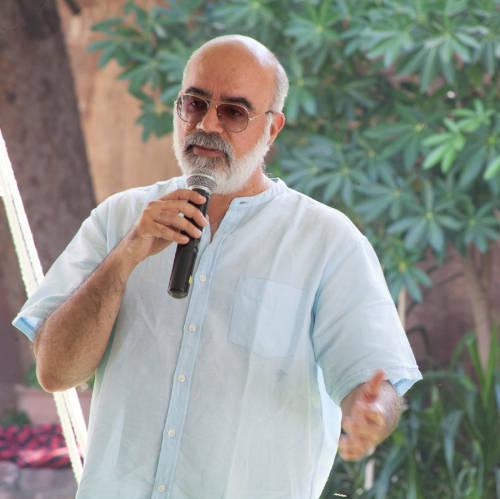Often overshadowed by more conventional tourist hubs of Rajasthan – Jaipur, Udaipur, Bikaner…, the end of the year however sees a beeline by visitors to Jodhpur. For it’s the unmistakable pull of RIFF, the pioneering roots (‘folk’, in general parlance) music festival, now in its 16th year. Jodhpur RIFF, India’s best known roots music festival, was back again this year with a stellar line-up – a veritable buffet of glorious musical traditions from around the world. During 27-30 October, Jodhpur’s Mehrangarh Fort hosted about 300 performers, showcasing the best of Indian and global roots music, dance, and collaborations between amazing artists. This year saw performers from various parts of the country, as well as from distant parts of the planet, including France, Australia, Cabo Verde, Italy, Estonia. And they did not disappoint. Like many a music festival, the real activity here too began in the evenings and effectively lasted till the mesmerising dawn settings. And with a backdrop such as the Mehrangarh Fort, which added to the magic of the performances. Among the changes that the festival brought in the last edition are sections called Indie Roots, an afternoon slot and a dance choreographer to work with traditional arts. “The idea was to explore what ‘indie’ means in our context and the other was to bring in other art forms where music plays a critical role,” says Divya Bhatia, Festival Director. Common consensus suggested that a stunning performance by Raina Patterson, along with Marco Cher-Gibard, in which an independent contemporary dancer took a traditional story – Narsimha – from a Mohiniattam tradition and added a contemporary musical component to it turned out to be one of the highlights of the festival. Part of Indie Roots, young, city-based, which focusses on independent singers and songwriters connected to traditional roots. The dawn concerts, as always held in the backdrop of Jaswant Thada, was one of the most popular elements of the festival, the number of artists grew significantly. Outstanding performances included Idu Khan Langa on the alghoza and Mahesh Vinayakram's Carnatic vocals. More unusual performances included Estonian flautists Kärt Pihlap and Katariina Tirmaste, who wove their personal histories within the performances. Harpreet, who had presented his interpretation of brings in our last dawn of Jodhpur RIFF 2023 with his musical interpretation of the tragedy of Jallianwala Bagh the day before, ushered in the sunrise with compositions of humanist poets such as Kabir and Bulleh Shah. The iconic Sharma Bandhu with their unique blend of semi-classical music and skillful storytelling, closed out the dawn performances. Each evening of course reverberated with a variety of melodious magic. The Manganiyaar tradition took centrestage across evenings, a highlight being Bade Ghazi Khan Manganiyar powerful version of Nimbuda. Smita Bellur’s qawwalis including perennial favourite Kab Tak Mere Maula also drew appreciation from the audiences, as always, a mix of the young and old, trendy to traditional – united by their love of folk forms of music. Asha Sapera and her aunts Mohini Devi and Sugna Devi brought to the fort the ever-popular music of the snake charmer community, the Kalbelias.
-

A dawn concert at the festival



































